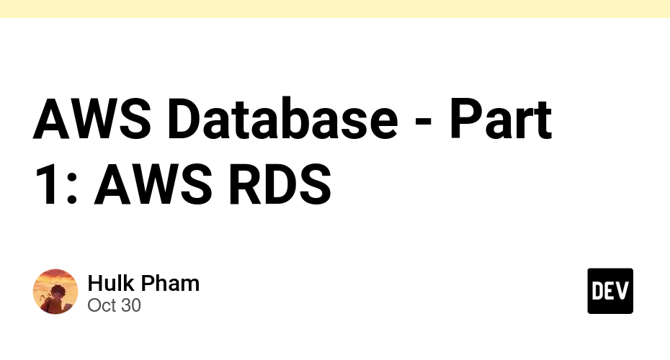Dev
2w
146

Image Credit: Dev
AWS Database - Part 1: AWS RDS
- Relational databases are excellent for complex data management. Amazon RDS is a managed database service that facilitates database management tasks that are necessary for optimizing query optimization and customer data management tasks.
- The popularity of relational databases makes them a familiar choice for tech professionals, and their adherence to ACID principles ensures the accuracy and integrity of data.
- Amazon RDS supports various engines such as commercial, open-source, and cloud-native options. It offers multiple storage types to tailor cost and performance.
- Amazon RDS implements IAM policies, security groups, encryption at rest, and SSL/TLS connections for security purposes.
- Amazon's RDS Multi-AZ deployment offers high availability by creating a redundant copy of databases in another availability zone, that provides access to the data so that applications can query and display the data.
- In automatic failover, the standby database is promoted to the primary role, and queries are redirected to the new primary database.
- Amazon RDS is built from compute and storage, and the compute portion is called a database (DB) instance, containing multiple databases with the same engine and different supported features and configurations.
- The storage portion of DB instances for Amazon RDS use Amazon Elastic Block Store for database and log storage.
- To accomplish regular backups of Amazon RDS instances, you can use automated backups, which are turned on by default, or manual snapshots to get backups that exist until deletion. Automated backups are beneficial for point-in-time recovery.
- Amazon RDS Multi-AZ ensures that you have two copies of your database running and that one of them is in the primary role.
Read Full Article
8 Likes
For uninterrupted reading, download the app